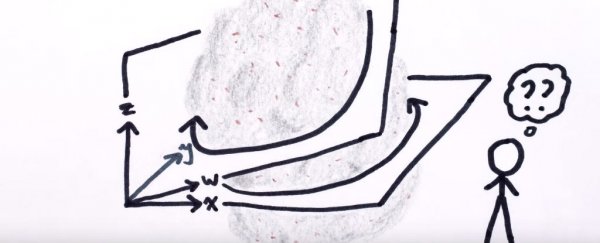About 4.6 billion years ago, a nebulous cloud of swirling dust and gas came together in very important ways, thanks to a wonderful thing called gravity. These important ways gave rise to the Moon, the Sun, and all the planets in our Solar System. But something strange happened - from that shapeless nebula, nearly all the planets and their moons somehow arranged themselves into a flat disc.
As the MinutePhysics video above explains, all the planets in our Solar System orbit within about 2 degrees of the same plane - except Mercury, because it likes to be different.
Despite having all of three-dimensional space to spread out into, for some reason, our planets arranged themselves more or less horizontally, which is incredibly convenient for the Solar System bedrooms that would come billions of years later.
It's natural for us to assume that in a Universe with three dimensions, its various parts would take advantage of all that space. If you grew up learning that the very inaccurate planetary model of the atom - which shows a positively charged nucleus being orbited three-dimensionally by negatively charged electrons - was in fact true, it would make sense that planets orbit the Sun in much the same way.
Instead, the Universe is characterised by its flatness - our Solar System is flat, Saturn's rings are flat, other planetary systems are flat, galaxies and black hole accretion disks are flat, and even the Universe itself is flat.
Why? As Henry from MinutePhysics explains, the Universe's love of all things flat comes about because of two things - collisions, and the fact that we live in three dimensions.
Whenever we have a bunch of things zooming about in space, governed by the force of gravity, their individual paths would be almost impossible to predict, because it's so randomised. But collectively, they have a single total amount that they spin about their centre of mass - the total angular momentum.
If we apply this to our nebulous cloud from earlier, mathematical models say that there must be some plane in which the cloud - as a single conglomerate of gas and dust particles - spins.
As you can see in the video, lots of particles will initially fly above and below this plane, but the combination of this perpetual rotation and the constant collisions of matter means everything will inevitably end up accumulating and spinning along that almost-two-dimensional plane.
There's some complex four-dimensional weirdness that comes into play here to ensure that the nebulous cloud can remain a three-dimensional cloud at the same time as being arranged on a two-dimensional plane, but I'll let Henry explain that one to you with his clever diagrams.
And if you're not done with the mind-bending physics of our flat Solar System, watch below, for more on the flat Universe, with Physics Girl:
